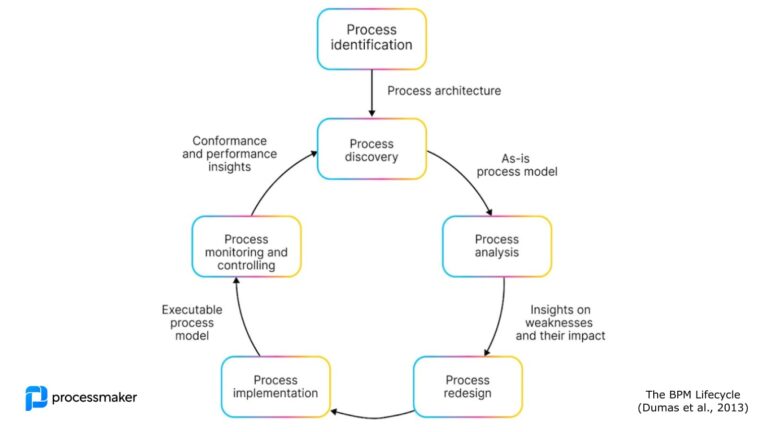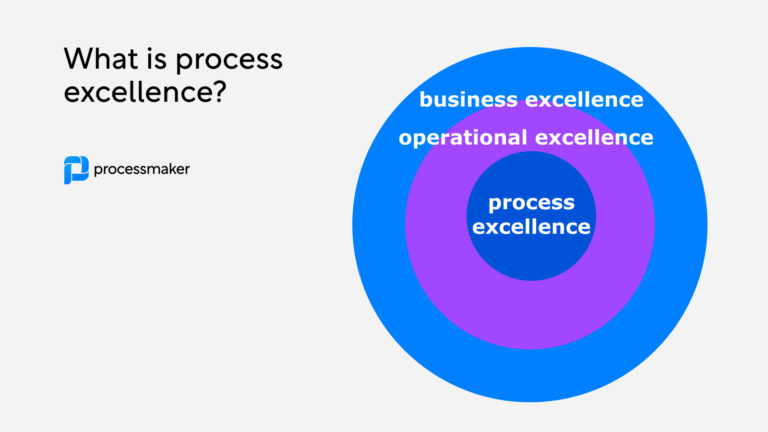Business processes play a vital role in effectively increasing your organization’s workflow potential. However, they are often repetitive, time-consuming, and prone to human error. Business process management (BPM) is a discipline utilized by organizations to tackle this challenge. Organizations started using BPM to analyze, discover, measure, and improve their operations. With the increase in the popularity of BPM, additional subsets such as consolidated intelligent BPM Suites (iBPMS) were introduced, with added features, capabilities, and capacity.
BPM is an effective solution, however, iBPMS platforms take things to the next level by using integration, composable architecture, business activity monitoring, cloud computing, message-oriented middleware, and artificial intelligence. This helps organizations manage multiple tasks with the help of a single platform to automate and configure their workflow with ease.
Learn more about capabilities and components of an iBPMS platform
iBPMS platforms are driven by multiple technologies that provide efficiency in business operations by effectively using advanced technologies like AI and IoT. The platform mainly depends upon the rules and models of processes to manage multiple tasks simultaneously.
In addition, iBPMS platforms typically include the following:
- Administration
- Monitoring
- Collaboration
- Execution
- Modeling
- Repository
- Rules Management
- Content Repository
- Integration
- Optimization
Using comprehensive decision models, iBPMS platforms simplify business processes and expand analytics by integrating machine learning.
Further, the user interface also plays a crucial role in developing multi-channel apps via easy-to-use tools such as low-code. With the help of application programming interfaces (APIs), organizations can successfully integrate newer technologies with their current systems.
You can count on iBPMS to consistently introduce new features that offer optimization, performance insights, and verification capabilities. These verification processes assist companies in dealing with unpredictable scenarios to retain consistency. iBPMS platforms also enable the integration with mobile-enabled processes, streaming analytics, and social media. In the next section, we’ll discuss how low-code makes an impact on iBMS solutions.
Understand low-code vs. no-code
The digital business world is driven by agility and tech-savviness. Many organizations now prefer to use low-code platforms instead of traditional application development. Why? Turnaround time is a critical factor here, so is democratic usage. There’s always a debate on whether an organization should opt for a low-code platform or a no-code platform.
With the ongoing battle of low-code vs. no-code, many end-users do find differences between the two options. To give more clarity around this topic, read on to learn more about origins of each and how they evolved to what’s in use today.
Low-code vs. no-code: A Brief History
Low-code platforms have been available for around a decade. If you have experience working in IT, you might have come across low-code platforms in one form or another – either as a derivative of software development tools and computer-aided design or a programming language (4th/5th generation), for instance, Python, SQL, and Perl.
All of these languages share the same objective: Hiding complexities (thousands of lines of code) and making processes simpler for the user. Abstractions in low-code/no-code circumstances normally comprise three stages: The logical/behavior- stage, internal/capability-stage and the external/use stage. Each of these stages assists in distinguishing between no-code and low-code platform types. Let’s take a look at a few:
Logical/behavioral stage: This stage explains business operations and the way tools are used, including workflows, built-in automation, and out-of-the-box integrations with external applications.
Internal/capability stage: This stage depicts the capabilities of a platform, noting the results you can obtain. Also, it entails out-of-the-box functionalities and the present tools and the extent to which these tools and operations can be altered based on your organization’s requirements.
External/use stage: This stage lists everything resulting from platform utilization. It comprises the data stored and collected, in addition to short-term processing changes across the application’s life.
What are some critical differences between low-code and no-code?
Forrester and Gartner describe low-code platform types as a visualized approach to application development, helping end-users in a layman’s way to test, manage, deploy, and build applications bypassing traditional methods.
Low-code and no-code platforms provide results using code blocks (specific codes for specific functions) that can operate within predetermined limitations via a simple drag-and-drop user interface.
For instance, when a particular set of activities are completed on your app, and you wish to set off workflow conditionally, a better alternative to using a programming language is LCNC, which will convert the set of tasks into code blocks that are easy to interpret and read.
Let’s assume that you need to meet three standard circumstances to trigger the workflow. With the use of code-blocks, the platform will execute the workflows once these three conditions are met. Yet, if you encounter two unique conditions with a no-code platform, you may be out of luck as it won’t assist.
On the other hand, a low-code development platform will offer multiple approaches if a unique condition arises quickly. A low-code development platform will perform this without diverting from its core goal of configuring workflows and building applications.
Why should you automate business processes with low-code? Process automation is a system that automates one business process or deals with one area and provides end-to-end automation to the entire business.
It’s also a technical and complex undertaking because businesses are evolving all the time. To replace manual workflows prone to human error, we need consumer-centric and technology-driven solutions that could quickly adapt when an organization scales..
With a low-code platform, you can expect to refine solutions at speed and scale. Not to mention, a low-code platform allows end-users and developers to collaborate and continuously work on improving their processes simultaneously. As organizations find the need to update their workflows constantly, a low-code platform can provide adaptable, portable, and scalable solutions so that you can customize and adapt to market changes seamlessly.
Why low-code is an asset to iBPMS
Process automation requires timely access to reliable and authentic data. To illustrate, different departments/lines of business rely on varying processes. Low-code platforms are an ideal option if you need to scale process automation, saving you time and effort. We’ll expand on additional reasons why low-code is an asset to iBPMs, including these listed below:
Ease of use
One of the many benefits that low-code platforms offer is that you don’t need to be a skilled programmer to use it. In addition, it offers a friendly user interface almost any business user can comprehend.
Empower citizen developers
Low-code platforms enable individuals to work independently and stay up to date with new developments without needing continuous assistance from the IT department. In a 2019 report, Gartner found that around 61% of companies plan to work on citizen development initiatives.
Enhance deployment speed
Another significant advantage that low-code offers is the deployment speed. With drag-and-drop features, end-users can quickly build and implement process models. Unquestionably, application deployment is just a click away. This reduces the time spent on development and coding, making the process more efficient.
According to Forrester, software development using a low-code platform is 10 times more effective and more rapid over using a traditional process.
Increase agility
With the process being an application, users can easily manage and change requirements in an agile way. It’s a straightforward process that doesn’t require complex code.
Recognized by Gartner as one of the few open-source iBPMS vendors, the Processmaker platform enables end-users to use low-code for automating business processes and decisions with intelligence.




